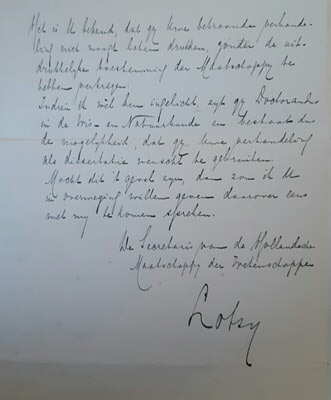Part 2: A second first prize and a dissertation
After Frits Zernike won a prize medal in Groningen in 1908, the young Frits had his eye on success. In 1912 he wins another prize in a competition held by the ‘Hollandsche Maatschappij der Wetenschappen’ (Dtuch Society of Sciences and Humanities). For his prize Zernike can choose between: 150 guilders (around 1700 euro) or a gold medal. In our collection are a number of medals of Zernike, but the medal of this particular prize is missing. We assume therefore that Zernike chose the money in stead.
For the competition Zernike solves a problem concerning opalescence. Opalescence is a phenomenon that concerns the refraction of light. You can see this effect for instance when you mix a drop of milk in a glass of water. When you then look through the glass in a certain way, you can see a bluish glow: this is caused by light refracting by the floating milk molecules in the liquid.

Critical opalescence takes place in a liquid, or in a mixture of liquids, under high pressure. The temperature lies close to the transition of liquid to gas (just under boiling point). The molecules are at that point, so to speak, looking for which form to take. They are not liquid, but also not gaseous: they are more like a sort of mist.
The Society oes not allow Zernike to publish his winning essay, because this is only allowed in the form of a dissertation. In 1915 Frits Zernike he obtained his doctorate in chemistry with distinction at the University of Amsterdam with a dissertation titled: L'opalescence critique, théorie et experiments.

